Trial Within a Reasonable Time
R. v. Jordan, 2016 SCC 27 and R v Williamson 2016 SCC 28: The Right to be tried within a Reasonable Time
In R v Jordan, a majority of the Supreme Court devises a new framework for determining whether the s. 11 right to be tried within a reasonable time has been violated. A minority of four Supreme Court Justices, while achieving the same result as the majority, rejects the new framework and insists that a modified version of the Morin framework is appropriate for the s. 11 analysis.
The tension between the Jordan framework and the revised Morin framework is revisited in the companion appeal of Williamson, where the court is similarly divided on the issue of what framework to use in such matters.
In Jordan, the accused was charged was charged in December 2008 for his role in a dial‑a‑dope operation. His trial ended in February 2013. The majority found the delay to be unreasonable.
Post-Morin: A new Framework for measuring Delay
Rejecting the Morin framework that had been the basis for the trial judge and the Court of Appeal’s reasoning in dismissing the S 11 application, the majority proposed a new framework. The Court found that the Morin framework had led to both doctrinal and practical problems, and instead of reducing delay, it encouraged delay.
The majority found that a new framework was required. This framework would encourage all participants to reduce delay and achieve the important objectives of S 11.
The Presumptive Ceiling
The central feature of this new framework is a presumptive ceiling beyond which the delay will found to be presumptively unreasonable. The only justification for delay beyond the presumptive ceiling is extraordinary circumstances and the onus is on the crown to prove the same. Exceptional circumstances will likely be of two kinds, discrete events and complex cases. Discrete events may involve situations such as illness or other unexpected events at trial. For discrete events, the delay will be subtracted from the total delay in the calculations.
Case complexity will automatically result in the delay being found reasonable and no further analysis will be required.
The presumptive ceiling is 18 months for cases tried in the provincial court, and 30 months for cases in the superior court (or cases tried in the provincial court after a preliminary inquiry). Defence delay does not count towards the presumptive ceiling.
Note: The Court also says
“ There is little reason to be satisfied with a presumptive ceiling on trial delay set at 18 months for cases going to trial in the provincial court, and 30 months for cases going to trial in the superior court. This is a long time to wait for justice. But the ceiling reflects the realities we currently face. We may have to revisit these numbers and the considerations that inform them in the future.”
If the delay does not exceed the presumptive celling the burden is on the defence to prove that the delay has been unreasonable.
“To do so, the defence must establish that (1) it took meaningful steps that demonstrate a sustained effort to expedite the proceedings, and (2) the case took markedly longer than it reasonably should have. We expect stays beneath the ceiling to be rare, and limited to clear cases.”
Transitional Exceptional Circumstances
For cases where the charges were laid before this decision, the Court says that reliance on existing law will be a factor in the delay analysis. While the Jordan framework will apply, if the time exceeds the presumptive ceiling the crown will be allowed to rely on a “transitional exceptional circumstance”,
“This transitional exceptional circumstance will apply when the Crown satisfies the court that the time the case has taken is justified based on the parties’ reasonable reliance on the law as it previously existed. This requires a contextual assessment, sensitive to the manner in which the previous framework was applied, and the fact that the parties’ behaviour cannot be judged strictly against a standard of which they had no notice”.
“This transitional exceptional circumstance recognizes that change takes time, and institutional delay — even if it is significant — will not automatically result in a stay of proceedings.”
For the defence, a similar exception will apply. The defence, because of reliance on existing law, will not have to demonstrate reasonable steps. As well, institutional delays that were previously acceptable will generally be tolerated.
A note about Prejudice
The Majority in this case says that while prejudice will no longer form a part of the S 11 analysis, once the presumptive ceiling is breached, prejudice does not have to be shown. It can be inferred.
“As this Court wrote in Morin, “prejudice to the accused can be inferred from prolonged delay” (p. 801; see also Godin, at para. 37). This is not, we stress, a rebuttable presumption: once the ceiling is breached, an absence of actual prejudice cannot convert an unreasonable delay into a reasonable one.”
Application to the Case
In this case the delay was 49.5 months. Jordan was only responsible for 5.5 months. A delay of 44 months was found to be clearly unreasonable.
Williamson is a sister appeal that uses the Jordan framework. In Williamson, there was a delay of 35.5 months. Williamson only caused 1.5 months of the delay, and therefore this was a case where the presumptive ceiling was breached. The majority in this case found that S 11 was breached. The majority did not found any exceptional circumstances in the form of discrete events or case complexity. The majority rejected the argument that the transitional exceptional circumstance applied in this case.
The majority also found that the accused was proactive in moving the matter along, whereas the Crown did little to nothing in doing the same.
The majority dismissed the dissent’s suggestion that Williamson’s “guilt” had any bearing on the analysis.
“At the beginning of his reasons, Cromwell J. references Mr. Williamson’s guilt (paras. 43, 44). This is troubling, as the ultimate question of guilt or innocence has nothing to say about whether the time taken to try him was reasonable. At the time of his s. 11 (b) application, Mr. Williamson was presumptively innocent. It is wrong to give after-the-fact effect to his convictions when the only question presented by this appeal is whether his right to be tried within a reasonable time was infringed at the time the application was brought.”
While the majority recognized that these charges were serious, it rejected the dissent’s opinion that that should be a factor in the reasonable delay analysis.
“ In this regard, we note that s. 11 (b) guarantees the right “to be tried within a reasonable time”. It does not admit of gradients of reasonableness where the charges are serious. For example, it does not guarantee the right to be tried within “somewhat longer” than a reasonable time, or within a time that is “excessive but not so long as to be clearly unreasonable” when the charges are serious (Cromwell J., at paras. 43, 80). Delay is either unreasonable, or it is not. As a result, our point of departure with our colleague is on what we consider reasonable. In short, we have different perspectives on a subjective standard.”
Indeed, the Court goes further and notes that
“These are precisely the cases that should be heard promptly, on the strongest possible evidence.”




